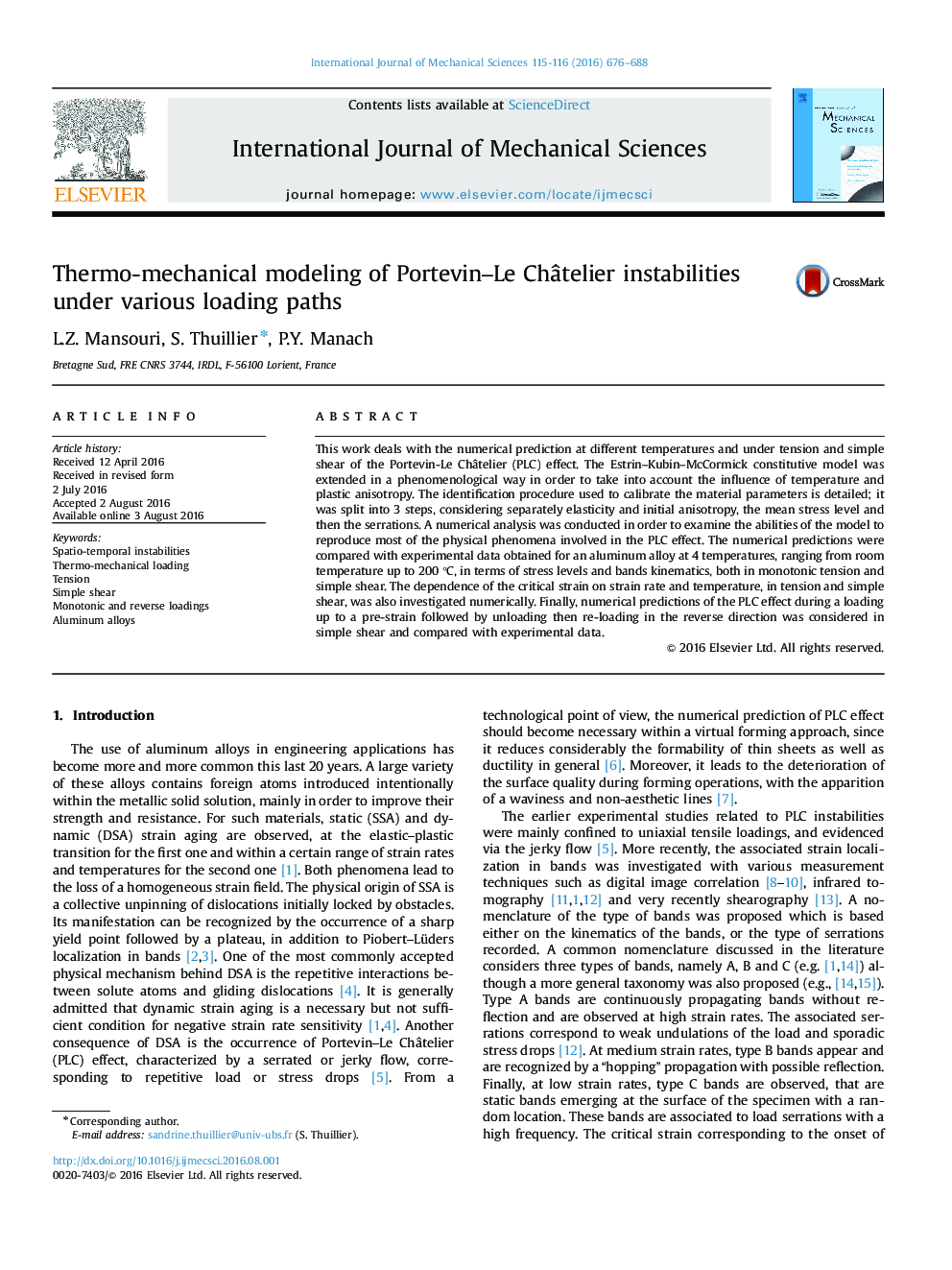| کد مقاله | کد نشریه | سال انتشار | مقاله انگلیسی | نسخه تمام متن |
|---|---|---|---|---|
| 779994 | 1464970 | 2016 | 13 صفحه PDF | دانلود رایگان |

• Modeling the PLC effect taking into account anisotropic yield and temperature dependence, from room temperature up to 200 °C.
• Three-steps procedure to calibrate the associated material parameters.
• Prediction of stress level and serrations and bands kinematics in tension and simple shear.
• Numerical investigation of the dependence of the critical strain on strain rate and temperature both in tension and simple shear.
• Prediction of the PLC effect under a complex strain path in simple shear.
This work deals with the numerical prediction at different temperatures and under tension and simple shear of the Portevin-Le Châtelier (PLC) effect. The Estrin–Kubin–McCormick constitutive model was extended in a phenomenological way in order to take into account the influence of temperature and plastic anisotropy. The identification procedure used to calibrate the material parameters is detailed; it was split into 3 steps, considering separately elasticity and initial anisotropy, the mean stress level and then the serrations. A numerical analysis was conducted in order to examine the abilities of the model to reproduce most of the physical phenomena involved in the PLC effect. The numerical predictions were compared with experimental data obtained for an aluminum alloy at 4 temperatures, ranging from room temperature up to 200 °C, in terms of stress levels and bands kinematics, both in monotonic tension and simple shear. The dependence of the critical strain on strain rate and temperature, in tension and simple shear, was also investigated numerically. Finally, numerical predictions of the PLC effect during a loading up to a pre-strain followed by unloading then re-loading in the reverse direction was considered in simple shear and compared with experimental data.
Journal: International Journal of Mechanical Sciences - Volumes 115–116, September 2016, Pages 676–688